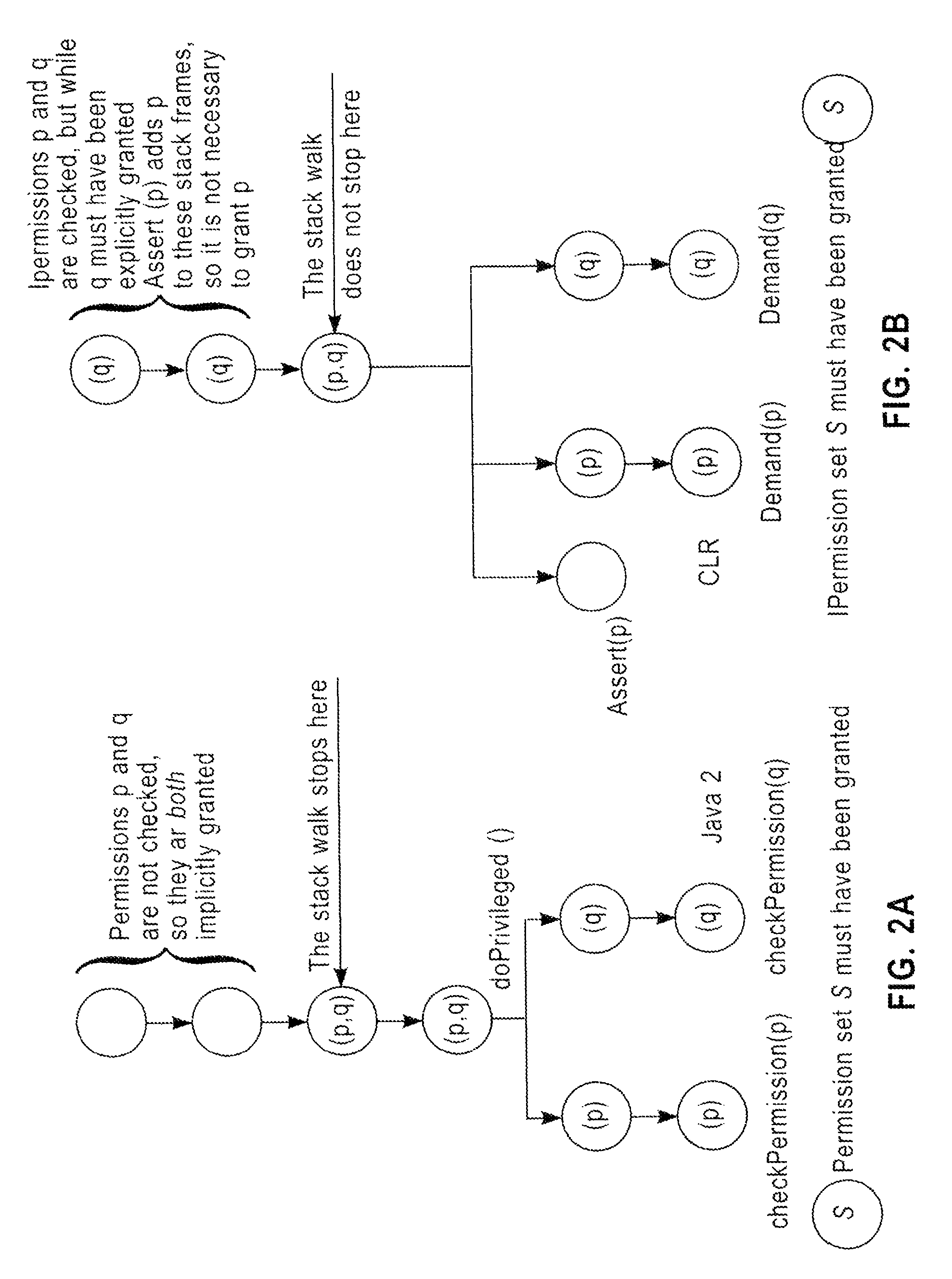System and method for the automatic verification of privilege-asserting and subject-executed code
a technology of automatic verification and privilege assignment, applied in reverse engineering, instruments, computing, etc., can solve problems such as security flaws, inability to specify particular permission requirements, and many problems in the implementation of privilege assignment and subject execution code, so as to prevent unnecessary authorization requirements
- Summary
- Abstract
- Description
- Claims
- Application Information
AI Technical Summary
Benefits of technology
Problems solved by technology
Method used
Image
Examples
Embodiment Construction
[0023]One or more exemplary embodiments of the invention are described below in detail. The disclosed embodiments are intended to be illustrative only since numerous modifications and variations therein will be apparent to those of ordinary skill in the art.
[0024]Aspects of the present invention relate to the performance of static code analysis procedures, wherein the static code analysis is performed in accordance with formal analysis methodologies. Aspects of the present invention may be implemented within conventional computing systems, wherein the static analysis methodologies, as discussed herein, can be performed in accordance with conventional automated analysis tool methodologies.
[0025]The Java™ 2 and CLR programming models are extensively used in multiple types of Internet applications, especially applications relating to electronic commerce. Due to the distributed nature of such applications it is essential that when access to a restricted resource is attempted all code cu...
PUM
 Login to View More
Login to View More Abstract
Description
Claims
Application Information
 Login to View More
Login to View More - R&D
- Intellectual Property
- Life Sciences
- Materials
- Tech Scout
- Unparalleled Data Quality
- Higher Quality Content
- 60% Fewer Hallucinations
Browse by: Latest US Patents, China's latest patents, Technical Efficacy Thesaurus, Application Domain, Technology Topic, Popular Technical Reports.
© 2025 PatSnap. All rights reserved.Legal|Privacy policy|Modern Slavery Act Transparency Statement|Sitemap|About US| Contact US: help@patsnap.com



